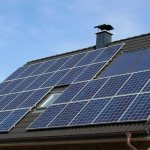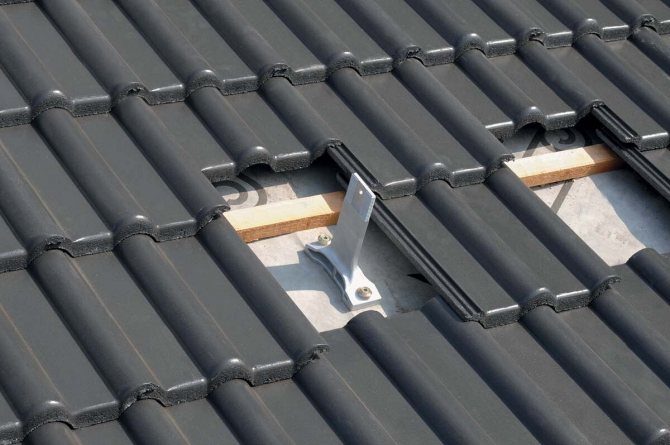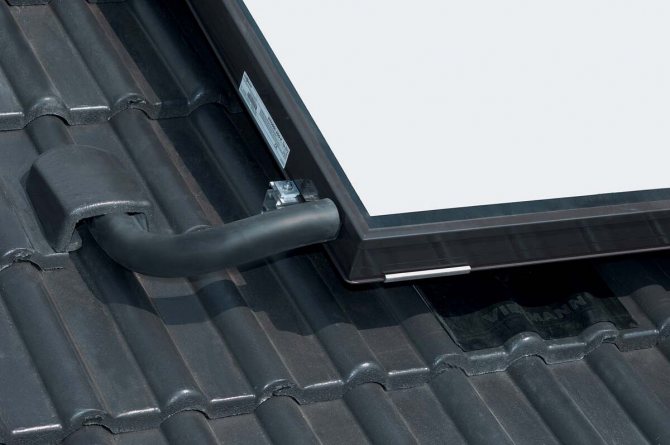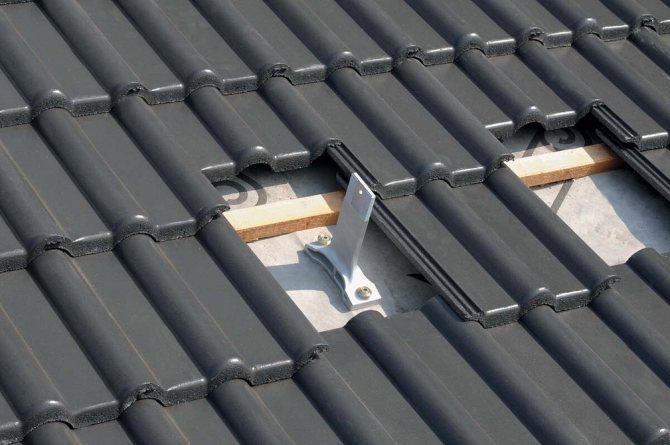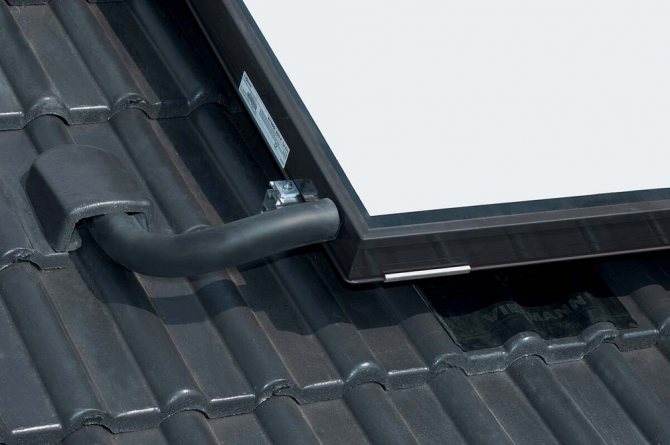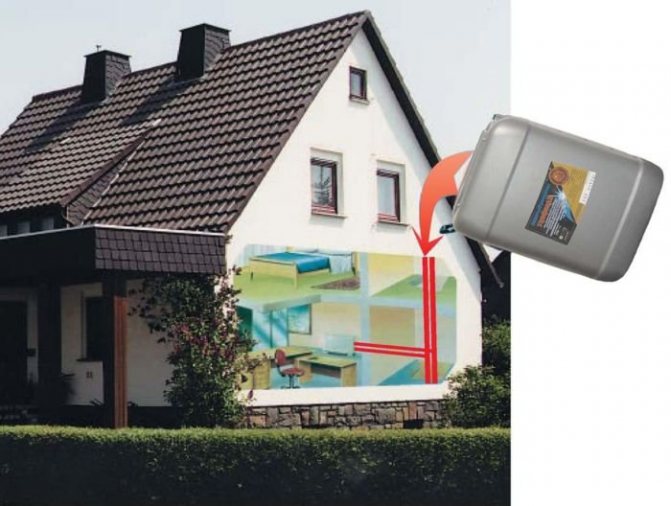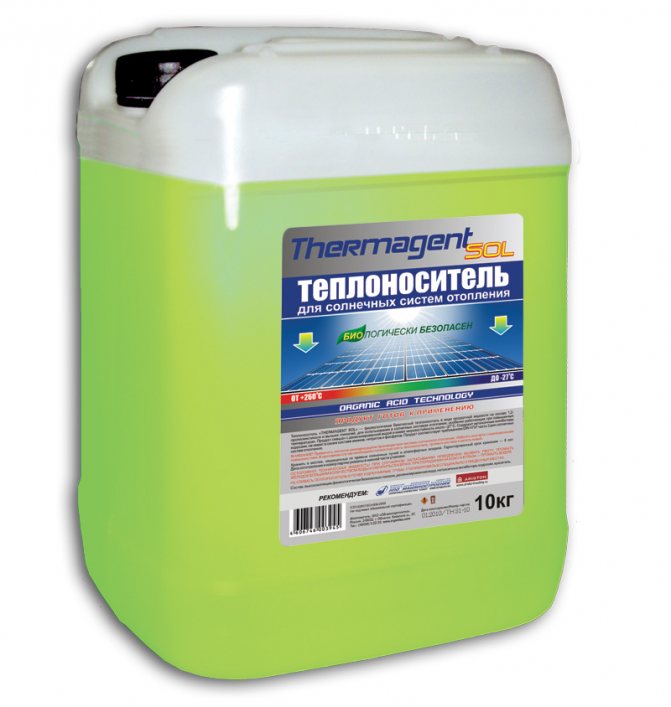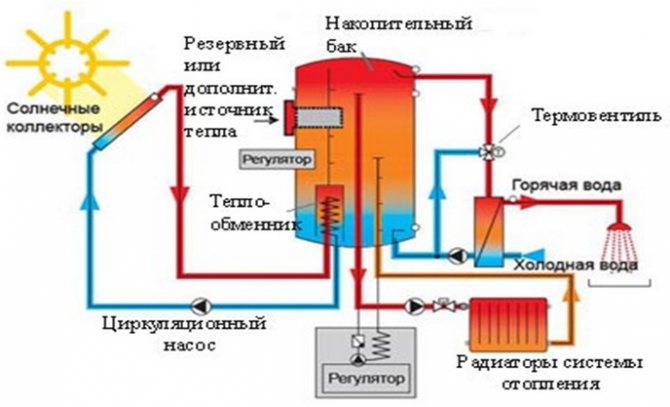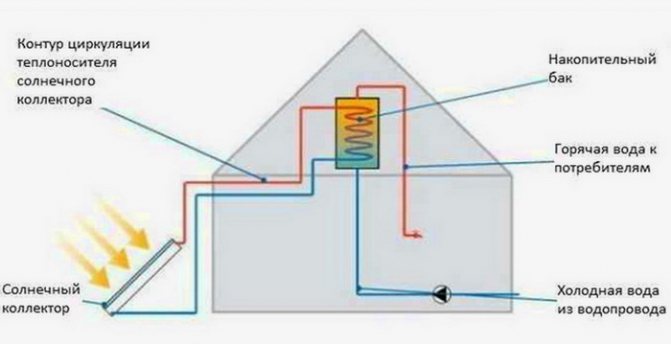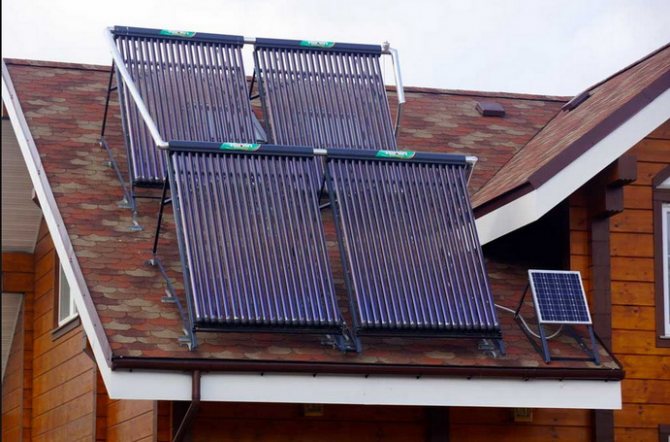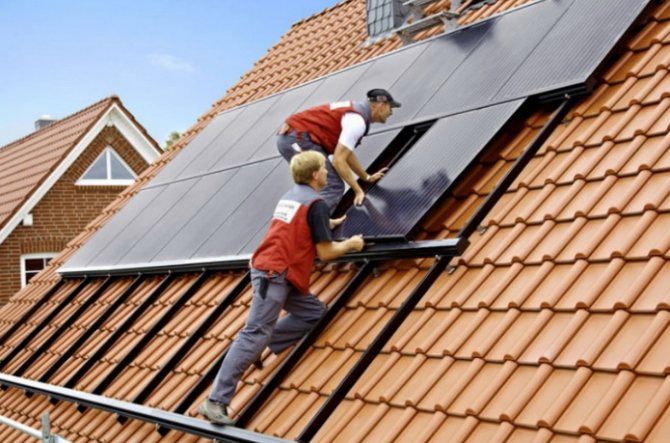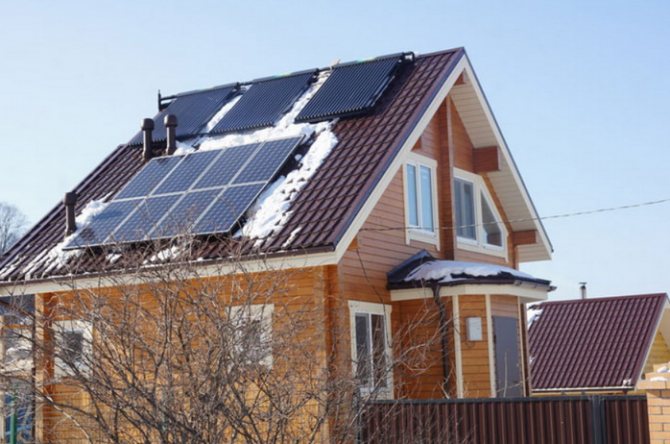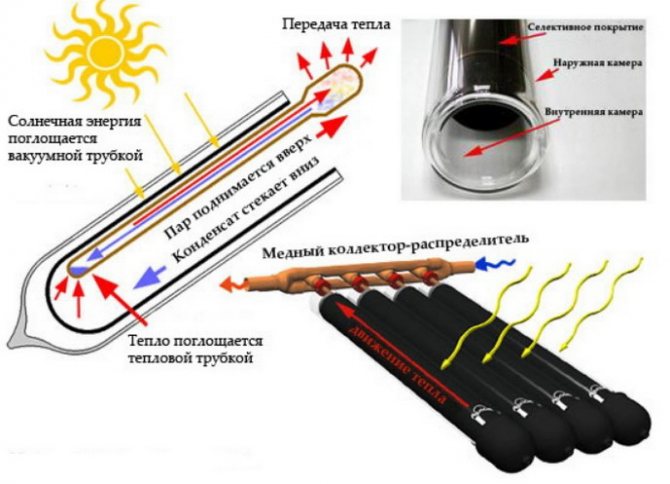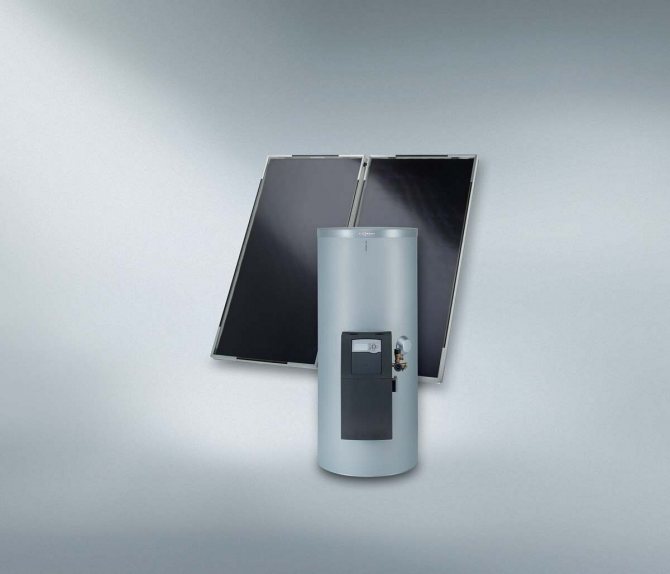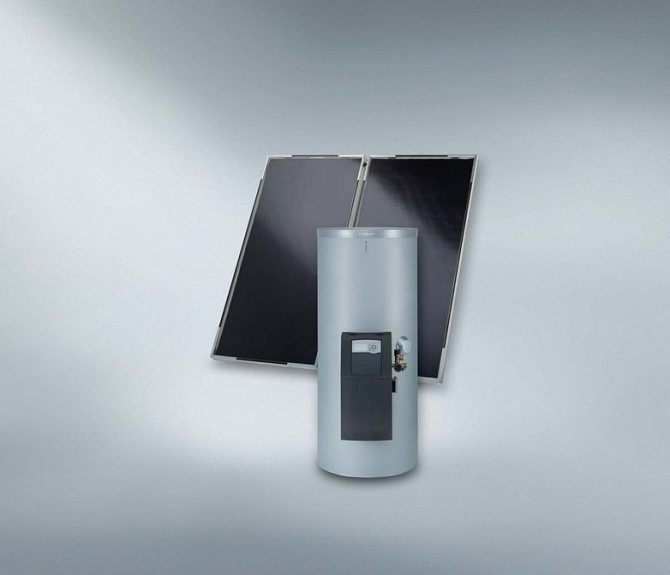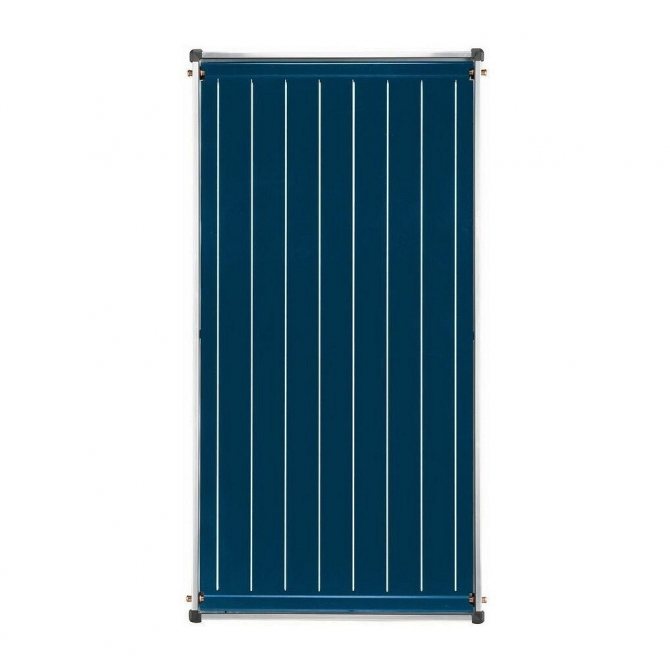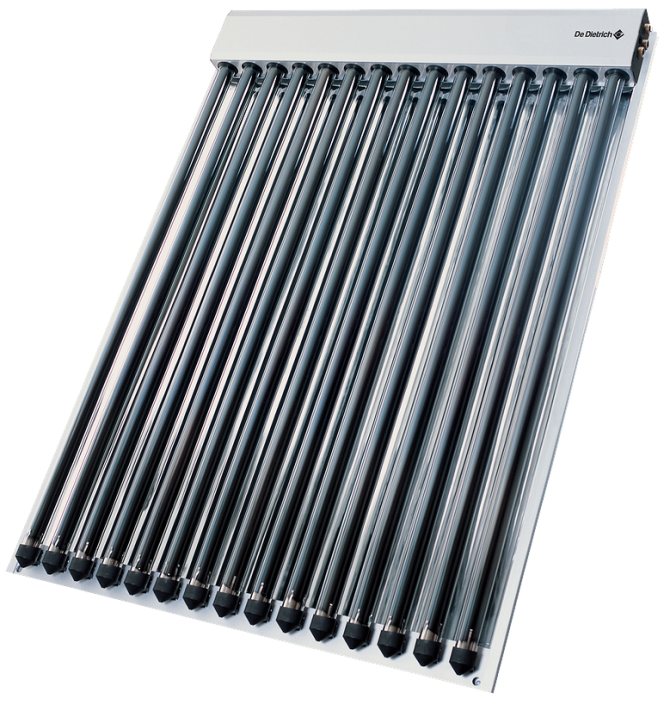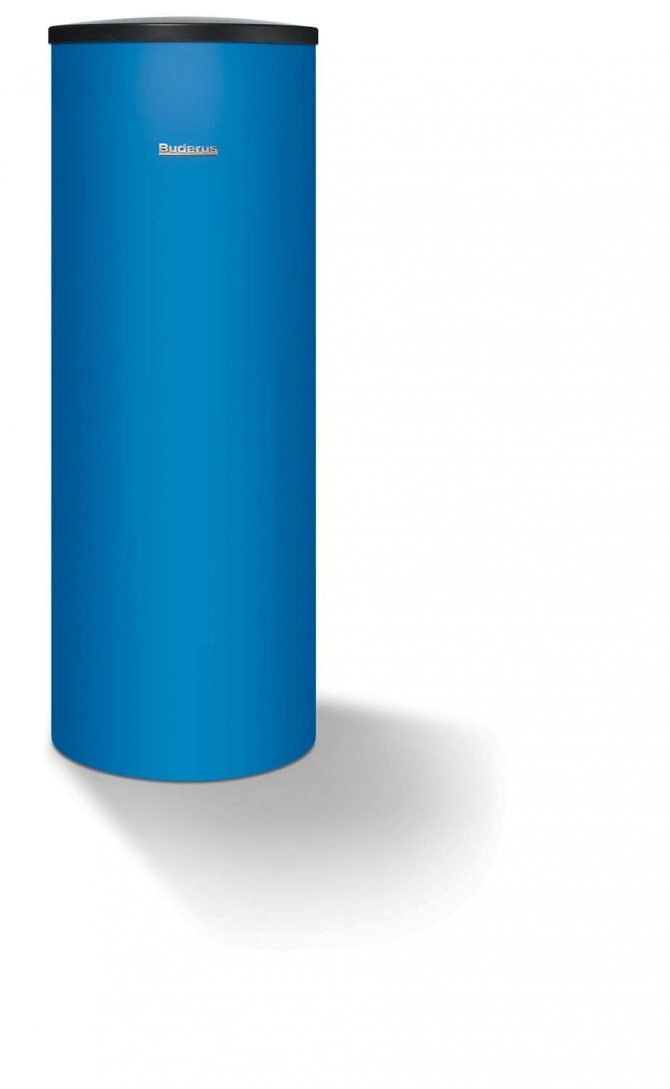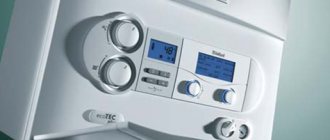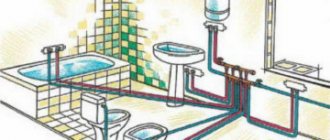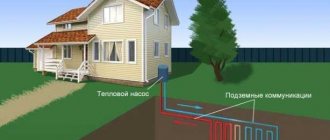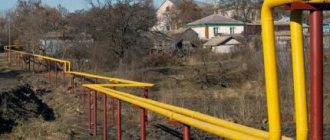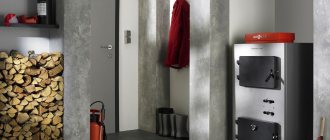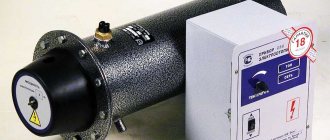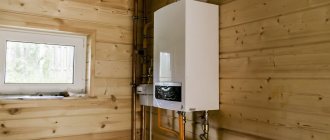Solar system
Heating a private house is a difficult and responsible issue, the solution of which requires costs and efforts. Tariffs and terms of supply of resources sometimes become excessively high and force to look for more rational and economical ways of heating without unnecessary costs. One of the options could be solar system based on completely free solar energy.
Every day, a huge amount of gigawatts falls on the earth's surface, which are scattered in the atmosphere and absorbed by the earth's crust. The amount of energy is great, but so far few opportunities have been invented to receive and store it. Solar systems for home heating are one of the ways to use solar energy for practical purposes.
What it is?
The solar system is complex of devices used to receive thermal energy from the Sun for home heating or other purposes. It is a heating source for the heating medium for the heating circuit of the house. Heating is done either directly or indirectly through a heat exchanger.
The solar system includes:
- Collector. A device that receives energy from the Sun and transfers it to the coolant in one way or another.
- Heating circuit of the house.
The main element of the system is the collector. It is a source of heating of the coolant. The rest is a conventional radiator heating system, or (better) underfloor heating.
It should be borne in mind that solar water heating systems, the price of which can be quite high, not always able to provide adequate and sufficient heating... It depends on the climatic and weather conditions in the region, the location of the house and other factors. Some experts believe that this type of heating can only be used as an additional option.
Views
There are different manifold designs that can demonstrate their effectiveness and capabilities:
- Open. Represent flat oblong black containers filled with water... It is heated by the sun's heat and can keep the water temperature in outdoor pools, outdoor showers, and more. The efficiency of such devices is extremely low, so they can only be used in the summer.
- Tubular. The main element of these systems are glass coaxial tubes, between the outer and inner parts of which a vacuum is created... A transparent protective layer with extremely low thermal conductivity is formed, which allows water (or antifreeze) to receive solar energy, practically without consuming it on the environment. The cost of such collectors is high, maintainability is extremely low and problematic.
- Flat. Represent flat boxes with transparent lid... The bottom is covered with a layer that actively accepts energy. KE pipes are soldered to it, along which water moves. Receiving heat, it is sent to the heating system. Sometimes air is pumped out from under the cover, increasing the efficiency of energy intake and reducing losses. There are also designs where the tubes are located between two receiving layers in which grooves are created for them. This allows for improved heat transfer.
There are also more modern types of collectors, in which the principle of a heat pump is used - there is a volatile liquid in a sealed container. When heated by the sun's heat, it evaporates. This vapor rises into the condensation chamber and settles on the walls, while releasing a lot of thermal energy.A water jacket is created on the other side of the walls, which receives this heat and is sent to the heating system.
Operating principle
The principle of operation of any collector is heating water or other coolant under the influence of sunlight... A classic example is the heating of objects on a windowsill, illuminated by the rays of the Sun, even if there is frost outside the window. In a similar way, energy is transferred in the collectors.
To obtain the maximum effect, it is necessary to provide optimal conditions, insulate all supply pipelines and a storage tank.
However, it should be borne in mind that any solar system for home heating, the price of which may turn out to be excessively high, has limited capabilities. It will be irrational to use it in regions with frosty winters, since the maximum difference between the temperatures outside and inside the collector should not exceed 20 °. This is only possible in relatively warm regionswhere there is no severe cold weather and enough sunny days.
Number of contours
Solar power plants can be single and double-circuit. Single-circuit systems perform a single function - they heat the coolant for the heating line. Double-circuit systems not only heat the coolant, but also prepare hot water for domestic needs.
Single-circuit solar system design for heating a private house, it consists of a collector that heats water, which is supplied to a storage tank, from which it enters the heating circuit. Having passed a full circle, the water cools down and again finds itself in the collector, where it heats up again, and so on in a circle.
Dual-circuit systems are more complex... The heat carrier, which heats up in the collector, is directed to a coil installed inside the storage tank, and gives off thermal energy, after which it enters the collector again. Heated water from the tank is supplied to the points of analysis (bathtubs, sinks and other plumbing fixtures), and is also directed to the heating circuit. Cooling down in it, it again enters the tank, where it is heated from the coil. Usually, antifreeze circulates inside the collector line, since the fluids do not mix, i.e. water heating occurs in an indirect way.
Types of coolant circulation
The coolant can move through the system in two ways:
Natural circulation. The principle of lifting heated liquids upwards is used. To ensure stable movement, the collector must be located below the storage tank, and the heating circuit must be located so that warm water rises up and enters the heating system, and the cooled return flow returns to the collector for heating
Forced circulation. In this case, a circulation pump is used to move the coolant. This option is preferable, since various external factors affecting the circulation regime disappear, the speed and direction of the flow become stable, maintained in a given mode. The disadvantage of this method is the need to purchase and maintain a pump that needs to be connected to an electric current network. The positive side is the ability to mount the system and arrange all the elements not according to the circulation conditions, but because it is more convenient and more rational in this room
In addition, there are options for the circulation of the coolant with entry into the heating circuitwhen it is connected directly to the manifold, and in its own closed loop. In this case, the transfer of heat energy is carried out indirectly through a coil installed in the storage tank.
Installation and orientation
The collector is installed in an open area, all day long illuminated by the sun's rays. The best option is roof of the house, but any structure, tree or elevation located nearby can become an obstacle to the rays, so you need to immediately control the density of illumination.
Also the solar system for heating water must be installed so that the rays fall on its surface perpendicularly... To do this, it is necessary to mark the position of the Sun in the middle of daylight hours and install the panels perpendicular to the rays so that the light falls on them vertically. In this respect tubular structures are more efficient, since they do not have a plane as such, and the surface of the tube equally well receives the flow from either side.
Payback period
Solar systems for heating, the price of which depends on the size of the house and the external conditions in the region, can pay off in a fairly short time, or not pay off at all. It is extremely difficult to calculate in advance from what time it will start making a profit, since there are too many subtle effects and influencing factors. Weather or climatic conditions, the level of technical performance of the system elements, the type of heating circuits and much more are involved.
A solar water heating plant is a kind of investment projectwith a delayed payback period. It is believed that the average lifespan of the equipment is 30 years. All this time, the complex will provide a certain amount of thermal energy, for which nothing needs to be paid.
Investments in the creation of the system are only initial, then occasionally only current repair work will be needed, which does not require serious costs. At the end of their service life, all units and elements of the solar system can be used for other purposes or sold as secondary raw materials. therefore the economic effect of the work will be obtained in any case, although it is not the main goal of the whole plan.
Pros and cons
The advantages of using solar plants include:
- the opportunity to use the inexhaustible and completely free solar energy;
- independence from tariffs of resource organizations and suppliers;
- the ability to adjust and resize the system at will;
- long service life with minimal repair costs.
The disadvantages of solar systems are:
- the system works only during the daytime, consuming the accumulated heat at night;
- dependence on weather and climatic conditions;
- low efficiency and overall efficiency of solar plants;
- not all homeowners have the ability to create a system;
- in regions with frosty winters, the systems cannot work.
When choosing a heating system, it is necessary to know and take into account the advantages and disadvantages of this technique.
Stagnation regime of solar installations: causes and consequences
Modern solar thermal devices have many modifications.
In their simplest form, they consist of:
- flat or tubular panels for collecting the sun's radiant energy;
- a storage tank for storing heated water;
- heat exchanger tank;
- pipelines and valves.
Simplified scheme of work
On the roof plane or in special trusses, metal plates are mounted, under which pipes with working fluid are laid. The collector absorbs electromagnetic waves from infrared to ultraviolet and, in fact, acts as a mini-greenhouse that accumulates heat and transfers it to a low-freezing solution, usually propylene glycol. The heated medium moves to the storage tank and the heat exchanger tank combined with it, heating the water flowing from there to home heating appliances and plumbing taps.
Unfortunately, there is a weak link in the functioning of classical photo collectors, the so-called phenomenon of stagnation (in Latin - stagnation).In this case, stagnation is associated with the summer period, when the system generates heat that is not needed in full at this time: in the heat, there is no need to heat the home and use a large amount of heated water.
If the generated heat is not completely consumed, for example, for seasonal reasons or due to the lack of owners, the thermal fluid may boil. A vapor lock appears, which stops the operation of the entire hydraulic system, stopping the circulation of the solution. A pause is required, most often at night, for the steam to condense and the solar plant to cool down. This means discomfort for the consumer, since an additional source will have to be connected to supply hot water, for example, an electric or gas boiler, until the night coolness cools the antifreeze.
With the frequent occurrence of such a situation, the thermal fluid changes its consistency, thickens and turns into a jelly-like mass, clogging the collector pipes. Washing it is a rather laborious and complicated procedure. Changing the concentration of propylene glycol changes its low-temperature properties, which can lead to freezing of pipes and destruction of expensive equipment. Thus, stagnation is the most likely cause of accidents and failure of the entire heating system.
How to choose a solar plant for heating and hot water supply of a residential building?
The choice of a solar system is an important step in determining the efficiency of its operation and investment of money. It is necessary to determine what kind of solar system is needed, the price and size, the type of solar collectors and other parameters of the complex.
It is necessary to select the design and configuration of the system, guided by the following criteria:
- the level of solar activity in the region;
- the amount of thermal energy required to heat the house;
- prioritize solar energy in heating the house - either the solar plant serves as the main system, or as a supplement.
Having decided on the main factors, you can proceed to selection of the optimal design and volume of the system.
Up to 100 m2
Solar system for heating a house of 100 sq. m. can serve as the main source of thermal energy... The main task will be the correct choice of the design of solar collectors so that it is possible to receive the maximum amount of heat.
It is necessary to produce calculation taking into account the number of storeys and configuration of the house, the number of sunny days per year, the parameters of the coolant in the system... Solar system for heating a house of 100 sq. m., the price of which can range from 18 thousand rubles. up to 180 thousand rubles. and above, it is quite capable of providing heating at home, if all the necessary conditions are met.
Up to 200 m2
For a house with an area of 200 m 2, the solar system can only become an additional source of heating. Typically, the peak of the use of such installations occurs in the autumn and spring, when there is enough solar heat, but there is a need for heating the house.
There are practically no design differences for such systems, only the storage tank is shared with the main heating line of the house. Experts say that the use of solar installations in the spring and autumn periods can reduce the load on heating systems by about 30-40%.
Second collector battery option
Collectors are similar in principle to conventional solar panels.
But their important and fundamental difference is the presence of thin-film plates capable of capturing not only direct sunlight, but also diffused light. At the same time, the only option capable of supplying hot water to the heating system throughout the winter, even when dense clouds hang for several days, are vacuum models of collectors
It is due to the vacuum that accumulated heat is stored.
When buying a vacuum manifold, you need to decide how the water will be heated.There are models of direct and indirect heating. In this case, the first are considered seasonal, since the storage tank is located in the collector body. In winter, they cannot be used, since the water in such a collector will freeze.
But it is possible to build a heating system on all-season collector batteries. Such a system will work even in severe frost, since the storage tank is at home, and the transfer of energy from solar panels is carried out using an anti-freeze coolant.
DIY design
The design of solar installations is not so complex that people with some training would not be able to make and run them on their own in their homes. Solar system for home heating 100 sq m with your own hands - this is a completely realizable idea, which will help to significantly save on purchase and repair work... Let's consider the possible options.
Thermosiphon solar system
Thermosiphon solar systems are tubular collectorswhich were discussed above. There are free-flow and pressure-free structures that differ in the way the coolant circulates. Non-pressure ones work on the natural movement of liquid and do not need electricity, the structure of the complex is much simpler and cheaper. Pressure head are capable of providing a given circulation mode and allow you to get maximum efficiency. The most active work of such systems is the period from April to October, the farther north the region, the shorter the period of the greatest activity of installations.
Air solar system
Air collectors are installations that using air as a heat carrier... They heat the house with a ventilation method, which allows you to seriously save on creating heating circuits and use the system all year round.
The collector is a hollow black box in which the air is heated by solar heat... Warm air is directed into the room, and cooled air is directed to the collector for heating. To reduce heat loss, the box is installed in a transparent sealed container that protects against external influences - wind, low temperature, etc. The inlet and outlet are placed in different rooms to increase the pressure difference and organize the circulation of flows independently.
Efficiency
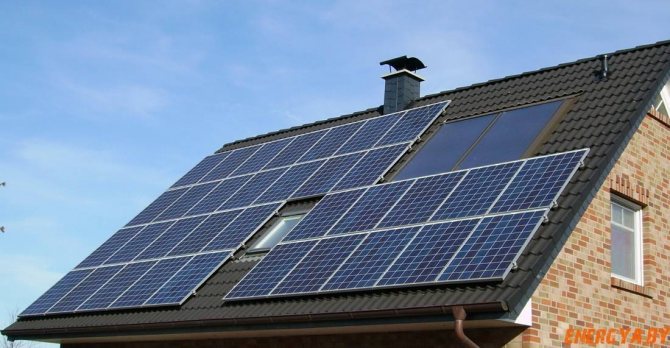
It is directly dependent on the absorbed rays of the sun. In the summer months, it is understandable that it increases, since the sun appears more often than in cold weather. I would like the opposite, since the house needs to be heated just in winter, and it would seem that it is impossible to influence this, but various technological aspects of the equipment are able to adjust the performance by increasing or decreasing the latter.
In the first case, it is recommended that the installation be carried out together with the use of traditional heating.
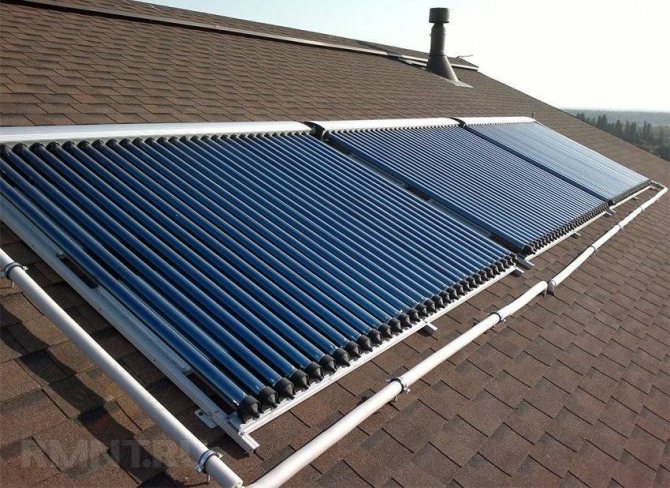

Basically, there are two types of such devices:
- small systems on photovoltaic cells, to which the structures belong, for operation using from 12 to 24V. They are quite enough for several lighting devices and a TV set to work;
- big. They are capable of storing and converting enough energy to heat a large enough dwelling, as well as use it to create an entire heating system. Of course, we are not talking about huge multi-storey cottages. Solar batteries are not able to "collect" so much heat that they have a comfortable temperature.
Operating tips
The operation of solar plants is carried out in accordance with the design features. The main task of the owner is to maintain cleanliness, remove dust or snow. In some cases it is required to periodically change the position of the panels in accordance with the seasonal changes in the position of the Sun... Repair or replacement of individual elements is carried out as the need arises, all work can be performed both independently and with the help of involved specialists.
How to make a solar collector
You can use a wide variety of materials at hand to make your own solar collector. First, the individual elements of the system are made, and then they are connected using pipes.
Stage # 1 - making a solar panel
To make a solar panel for heating, you need a box and radiator material. The box is usually made of plywood. It is recommended to insulate the walls and the bottom of the box, for example, with a layer of polystyrene, in order to minimize heat loss. For the manufacture of a radiator, you can use segments of wide pipes, which are connected to each other with pipes of a smaller diameter.
An interesting version of a homemade solar panel made of aluminum cans is presented in the following video:
The top of the box is covered with glass of a suitable size. To improve the efficiency of the solar panel, it is recommended to paint the inside and radiators black, and make the outside of the panel white.
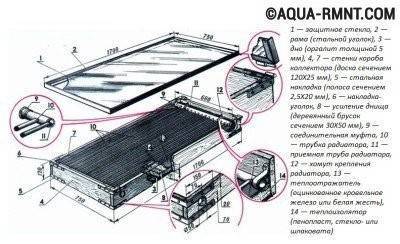

This diagram clearly demonstrates one of the options for creating a panel for a solar collector. The box is made of boards and hardboard, covered with glass
Stage # 2 - avancamera and storage tank
To make these solar collector elements, you will need a pair of suitable containers. The drive needs a rather large tank, its capacity should vary between 150-400 liters. The tank should also be insulated, for example, by placing it in a plywood box and filling the surrounding space with heat-insulating materials: foam, mineral wool, sawdust, etc.
Advice. If it was not possible to acquire a tank of suitable dimensions, you can use several smaller containers by connecting them together.
The avancamera is made from a small tank with a capacity of no more than 40 liters. This container must be sealed and equipped with a ball valve or other water supply device.
Stage # 3 - assembling the whole system
After the main elements are ready, they must be correctly positioned and connected to each other. First, install an advance chamber and a storage tank.
At the same time, it is important to correctly observe the ratio of the liquid level in each container. The water level in the front chamber must be more than 80 cm higher than the water level in the storage tank
The solar panel is usually placed on the roof, ideally on the south side with a slope of about 40 degrees to the horizon. The distance between the storage tank and the radiator should be at least 70 cm. Thus, an avancamera is placed at the top of the system, a storage tank is placed below, and a solar panel is located at the very bottom.
Note! There can be a significant amount of water in the storage tank and the front chamber. Even at the design stage of the system, it is necessary to correlate the maximum possible weight of the coolant and the bearing capacity of the floor on which the solar collector will be mounted
Then you should install:
- drainage pipe of the storage;
- an anterior chamber drainage pipe;
- cold water supply pipe to the front chamber;
- cold water inlet pipe;
- cold water supply pipe to mixers;
- hot water supply pipe to mixers
- hot water supply pipe to the storage tank;
- "Hot" solar radiator pipe;
- feed pipe of the storage tank.
At the same time, it is recommended to use half-inch pipes in high-pressure sections of the system, and inch pipes are suitable for low-pressure sections. In addition, you should use various fittings, adapters, bends, etc. The detailed diagram of the solar collector is shown in the figure:
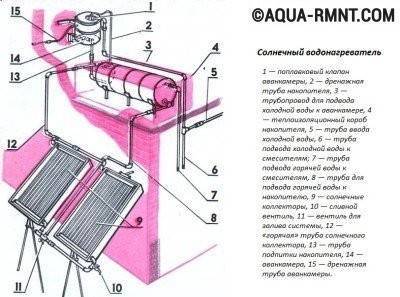

The diagram of the solar collector device shows the location of the front chamber, storage tank and solar panel, as well as the pipes connecting them.
To put the system into operation, it is necessary to fill the installation with water through the lower drainage holes. Then the front chamber is connected to the water supply system of the house and the liquid level in the manifold is regulated.If all joints are tight, you can start using the new device.
1.Thermostatic anti-scalding valve
The main function of the thermostatic valve is to protect against scalding and burns. In heating systems that do not use solar energy, this valve is rarely installed, since the hot water temperature can be adjusted on the main heat generator. Therefore, sometimes during the design and installation of a solar system, this element is forgotten.
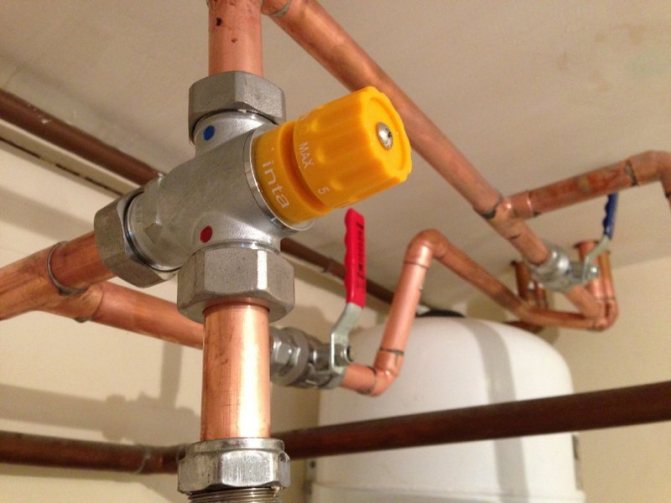

Of course, in a solar system regulator it is also possible to limit the water temperature to a safe level. However, to improve the performance of solar collectors, it is better to heat the accumulator tank to the highest possible temperature. This will allow the accumulation of more heat and will make it possible to use the energy of the sun even on the following cloudy days.
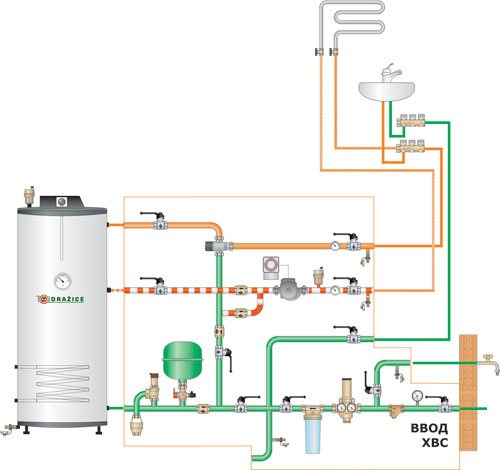

Example of piping between a thermostatic valve and a DHW recirculation system
Also, short-term heating of the storage tank to extreme temperatures can be used as protection against stagnation. This in turn extends the life of the main solar system components.
Read more about stagnation and methods of combating it at the link: solar system stagnation
If the valve is installed too close to the water heater, it overheats and blocks the flow on the hot water side. As a result, cold water flows into the tap for some time. The valve should be installed a little further from the water heater, as shown in the figure. In this case, it will work correctly.


Installing a thermostatic valve to protect against scalding
Installation Recommendations
In this list, we will list those points that installers must approach with full responsibility.
So, the following nuances are important:
- Heliopolis area... That is, take care to check if you have purchased a sufficient number of panels. It also often happens that a store sells too many items in pursuit of profit.
- The angle of inclination of the collectors.
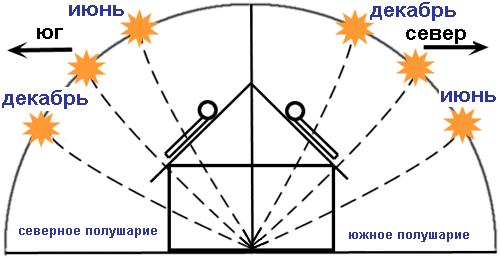

Initial data for calculating the optimal tilt angle of the device
- Storage tank volume.
In all cases, the best solution would be to take advice from an independent specialist and go to the store with these calculations.
This concludes our review, and you can proceed to the results.
Installing the DHW storage tank
The battery tank must be installed in an easily accessible place. This will make it possible to carry out the necessary maintenance or repairs without hindrance. It often happens that solar equipment is installed under the stairs or in the basement. In this regard, special attention should be paid to the height of the room.
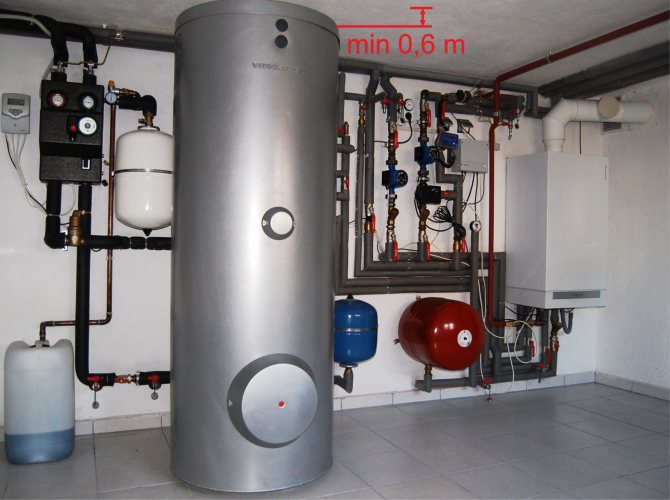

Insufficient room height when installing a water heater
The problem is that usually a magnesium anode is mounted on the top of the water heater. And in order to replace it in the future, it is necessary to have an appropriate space above the tank. Usually the anode is at least 0.6 m long.
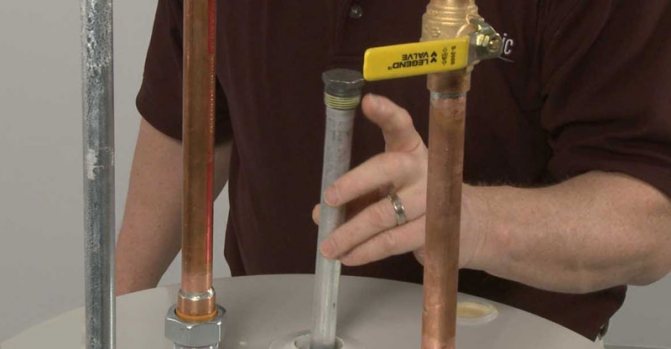

Replacing the magnesium anode
If the height of the room is less, then it is necessary to take care of the installation of an active electric anode already at the stage of installation of the gel system.
Which option to choose
The power of such heating in kW in each specific case can only be calculated by a specialist. However, there are several nuances that everyone needs to know about. So, air collectors will be effective only if they completely cover the southern side of the building. If you live in the southern region, then the best option is a flat collector. It is even possible to equip the heating of the greenhouse with this type of solar collector. But in regions with a more severe climate, it is best to use tubular collectors. And if the device is also equipped with a Heat-pipe system, then it will be warm not only in cloudy weather, but also at night. Such systems are not afraid of either ventilation or severe frosts.
YouTube responded with an error: Access Not Configured. YouTube Data API has not been used in project 268921522881 before or it is disabled.Enable it by visiting https://console.developers.google.com/apis/api/youtube.googleapis.com/overview?project=268921522881 then retry. If you enabled this API recently, wait a few minutes for the action to propagate to our systems and retry.
- Similar posts
- What are solar water heaters for home heating?
- Pros and cons of solar panels for home heating
- How to install solar heating in a greenhouse with your own hands?

